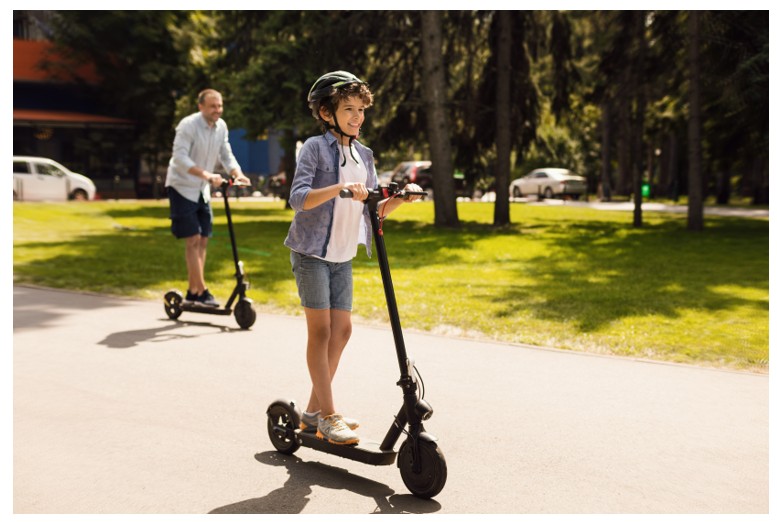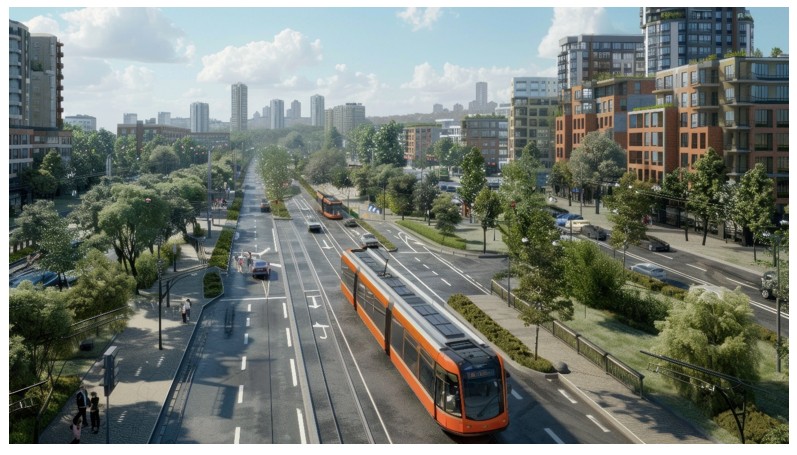TAC Sponsor Spotlight Article – GHD
by Michael Collins, Transportation Market Leader, Ontario, GHD
The landscape of our urban environments and the mobility required to sustain them is undergoing a profound transformation. As cities navigate new complexities, it is essential to reflect on past practices that have shaped major cities, and consider how more livable and prosperous urban environments can be created.

The Evolution of North America’s Vehicular Networks
The expansion of highway systems and accelerated vehicular adoption in the mid-20th century fueled economic growth across North America by connecting more goods and people than ever before possible. Our roads and highways directly responded to this demand as our economy grew. While the investment in vehicular infrastructure remains critical to regional and national economic viability, some parts of these networks are reaching the end of their operational and social service life, nowhere more so than in our major cities.
Major urban centers are often traversed by major roads and highway corridors, where land uses and population densities are now profoundly different than in the mid-20th century. Despite the success these networks enabled, it also resulted in car-dependent communities, community fragmentation and often socio-economic disparities. Existing natural landscapes and public spaces were frequently exchanged for roads and highways to keep up with the continued vehicular demands and the prosperity it brought.
However, despite this success, many of our urban cities have reached the tipping point, where the car-centric networks that enabled legacy growth are becoming barriers to future community growth. With no viable space left to accommodate “more cars,” an effort to explore efficiency within the same space for “more people” and “more goods” is required. In high-density urban environments, this is what unlocking the future economic viability of our built environment is contingent on. It is not just how we move the same volume of people to the same places, but also how we incentivize people to make different choices and get goods and services closer to the people where they live.
This efficiency is often characterized as full-service community planning, or a “15-minute city” concept. These ideals are contingent on fundamentally different work modes in our urban centers. Transitioning from a car-centric legacy towards a human-centric future requires prioritizing things humans need to be closer and more convenient to access. Unlocking human-centric design means thinking about what people need to make choices. These include the core principles of safety, security, convenience, accessibility, and livability for all people. The end objective is to create thoughtful, resilient communities supported by well-connected, space-efficient hubs that empower choice that puts user needs first.
The use of space for people and goods for the future of our great cities, where space is at a premium, is a matter of unlocking a new era of economic prosperity that these urban landscapes demand. Our cities are constantly changing and growing to remain prosperous; our transportation networks within these urban environments are fundamental to enabling that prosperity for its citizens.
Planning for a New Urban Future
The concept of “15-minute cities,” where most daily needs can be met within a short walk, bike ride, or transit trip, offers a compelling alternative to car-centred mobility. Investing in space-efficient, well-connected hubs can prioritize livability, accessibility, health, and resiliency. To achieve this vision, mobility design must focus on the user experience, understanding people’s needs and improving the convenience and safety of mobility choices. It also requires more than just changes in transportation planning; it demands a holistic rethinking of land use and development. By embracing zoning reforms, cities can unlock the potential to create vibrant, sustainable communities where people can live, work, and play without relying on cars.
Shifting needs among North America’s workforce have significantly impacted transportation demand over the past few years. A research report by GHD titled Crossroads shows that 59% of respondents in North America are working either remotely or in hybrid settings. Sixty per cent of respondents want their government to prioritize road safety over solving road congestion, indicating a strong public desire for safer travel.
One inspiring example of successfully rethinking an urban space is The Bentway and the broader Gardiner Expressway in the City of Toronto. The Gardiner Expressway is an elevated freeway built in the mid-20th century and, within recent decades, has been a mix of critical asset and critical liability. While some sections in the east limit have been fully decommissioned and removed, once serving critical marine ports, others still serve as vital access to the downtown core combined with other critical “City-Building” transit investments.
Under some segments of the Gardiner Expressway, which will remain a part of the City’s vehicular future, once also included a patchwork of vacant lands, parking lots and other underutilized space. This area has since been transformed into a vibrant linear park and trail network hosting ice skating in the winter, farmers’ markets in the summer, and concerts and artistic showcases. The Gardiner Expressway and The Bentway demonstrate that existing infrastructure can be transformed into welcoming and engaging public spaces, while balancing the needs of the City served by legacy assets with new human-centric purposes.
Creating Places for Intergenerational Mobility
Creating cities that accommodate the needs of all generations is also essential for fostering thriving communities. This involves addressing the “first and last mile” challenge, ensuring people can easily travel from their homes to public transit and their final destinations.
While micro-mobility options like e-scooters and bikes play a crucial role in the effort to move efficiently within the City, aging populations, people who use mobility-support devices, families, and those travelling in groups may not always have the same needs. A thorough design approach can build more inclusive mobility networks by integrating these modes into community planning and providing adequate, safe infrastructure such as bike lanes and accessible parking. As many as 55% of respondents cited in GHD’s Crossroads report said they would be more likely to use public transport if it were easier, more reliable, or less expensive.

A Path to Equitable and Sustainable Urban Development
Addressing legacy issues is also crucial. Investments made in infrastructure between the 1950s and the 1980s have disproportionately impacted disadvantaged communities—especially communities of colour and those with lower incomes. According to the paper “Systemic racism: individuals and interactions, institutions and society,” although neighbourhood transitions in the 1950s and 1960s improved access for people of colour to housing in the short term, the neighbourhoods eventually wound up as poverty traps. Because of redlining and racial discrimination built into housing and credit markets by federal policies and private practices, once a neighbourhood became racialized, it was cut off from investment, resulting in the progressive deterioration of its housing stock and business infrastructure. A serious consideration of infrastructure legacy issues and a commitment to equitable and inclusive planning practices are imperative.
Transit-oriented communities (TOCs) or transit-oriented developments (TODs) offer a model for community-centric planning. These communities prioritize people by considering why they move first, then developing space- and energy-sensitive networks to support them. TOCs encourage active, walkable, and healthy neighbourhoods, reducing the need for private vehicle trips, and resulting in significantly less space and capital-intensive infrastructure solutions.
TOCs can also impact investment decisions among citizens. GHD’s Crossroads report revealed that 43.5% of respondents in North America would spend more to live closer to public transit, workplaces, educational institutions, hospitals, and parks. Younger individuals (Gen Z and Millennials) were more likely to express this preference.
The connection between transit and real estate is central to creating vibrant, sustainable communities. TOCs exemplify this link by integrating residential, commercial, and retail developments around public transit hubs. This approach enhances accessibility and drives economic growth.

Balancing Purpose-Driven Vehicular Mobility
While alternative modes of transport are crucial, the movement of people and goods by cars and trucks still plays an essential role in communities and economies. Decisions on infrastructure that serves all needs for citizen mobility and the flow of goods must be made with clear, specific purposes in mind, such as providing direct community services and supporting the supply of goods.
As populations evolve, age, and diversify, the understanding of transportation needs should too. Redefining the role of private and community surface vehicles allows decision-makers to allocate resources where they are needed most, ensuring that mobility solutions are equitable and inclusive. Focusing on the specific needs of those who rely on vehicular access leads to more responsible and impactful decisions that enhance the quality of life for all.
Building a better future for urban mobility requires learning from the past, embracing innovative planning and thinking and leveraging technology. Moving away from outdated paradigms and focusing on safe, human-centric, community-forward, and purpose-specific solutions can shape a future where mobility empowers people, drives community health, and fosters sustainable growth. The journey to this new era of urban mobility starts with a commitment to rethinking how cities are planned, designed, and built.
To learn more about GHD’s research on mobility, visit https://www.ghd.com/en/campaigns/transport-mobility-campaign


